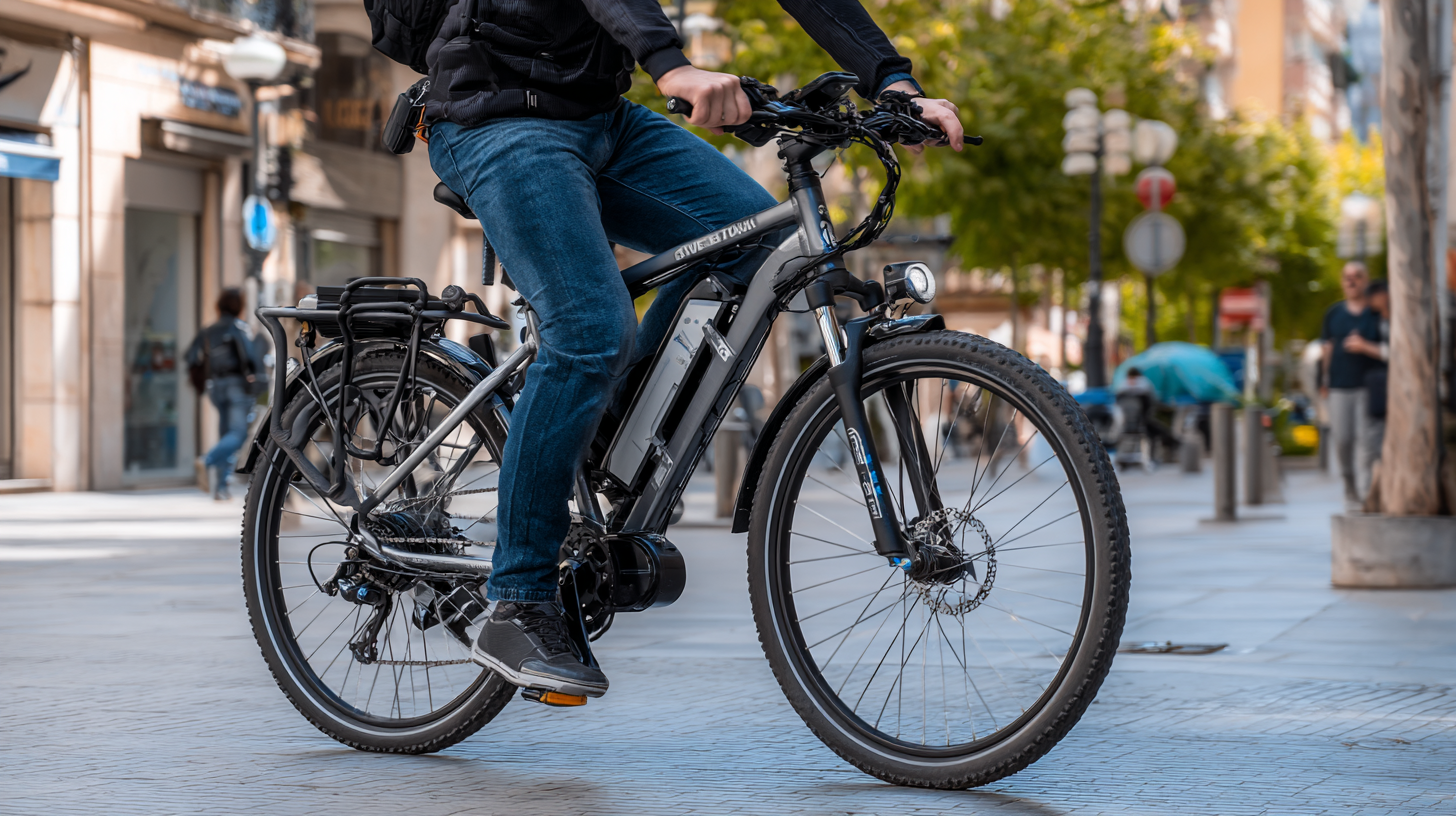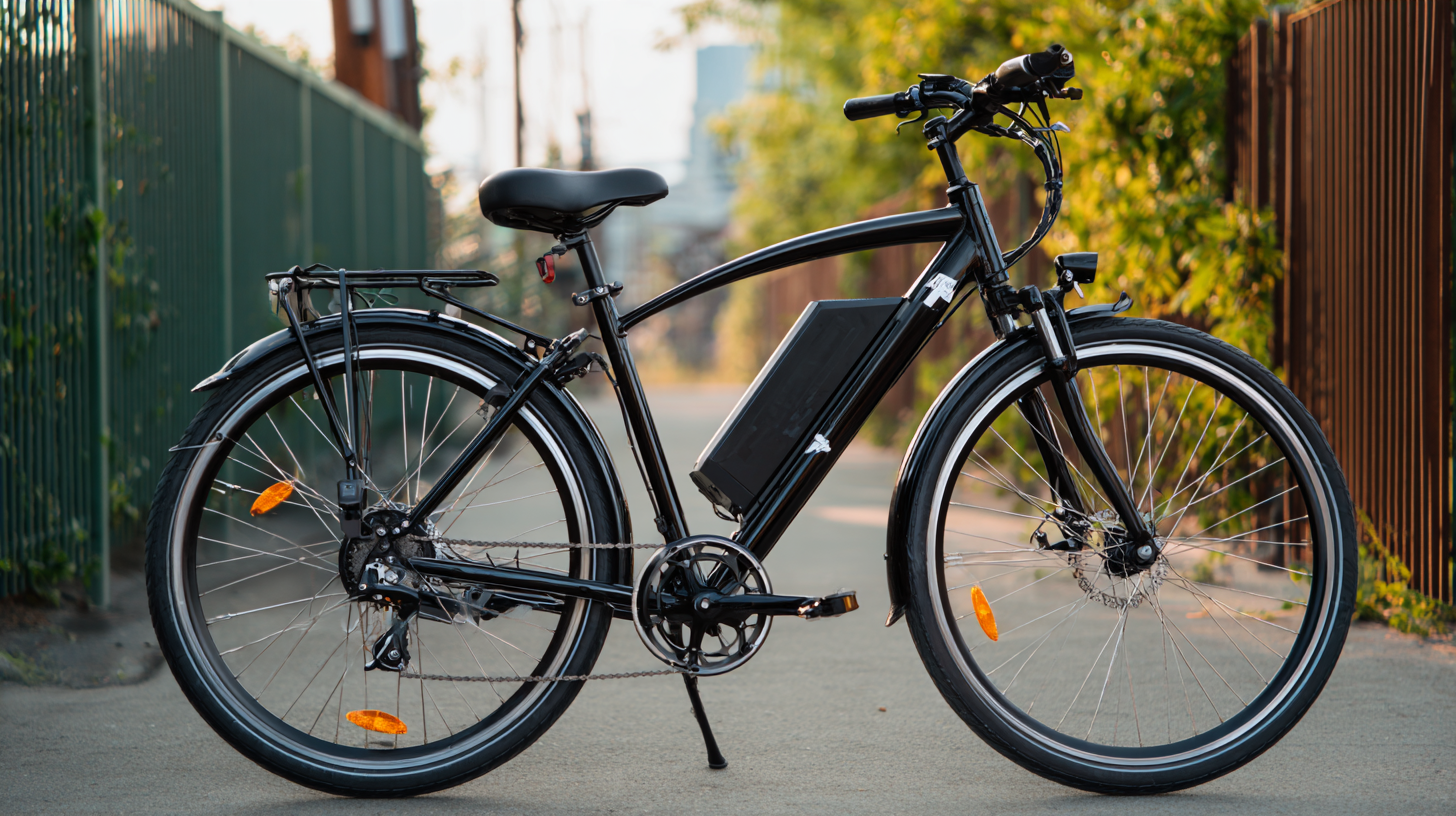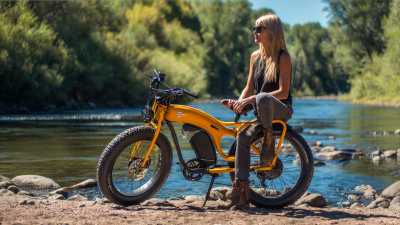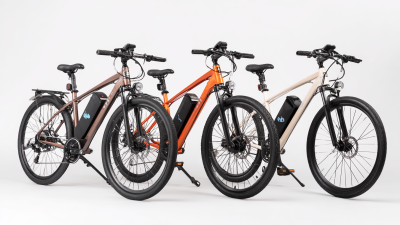Transform Your Ride: Exploring the Benefits of Electric Bike Conversion Kits for Urban Commuting
As urban commuting becomes increasingly challenging with rising traffic congestion and environmental concerns, many riders are seeking innovative solutions to enhance their daily travel experience. One such solution is the Electric Bike Conversion Kit, which allows traditional bicycles to be transformed into efficient electric-powered vehicles. This guide will explore the myriad benefits of utilizing an Electric Bike Conversion Kit, from its cost-effectiveness to its environmental advantages, making it an ideal choice for city dwellers. We will delve into how this conversion not only promotes sustainable commuting but also offers an enjoyable and convenient alternative to conventional transportation methods. Whether you're a daily commuter or a recreational cyclist, understanding the potential of Electric Bike Conversion Kits can significantly enhance your ride, providing a refreshing and eco-friendly way to navigate urban landscapes.

Understanding Electric Bike Conversion Kits: Types and Features
Electric bike conversion kits offer a practical and economical alternative for urban commuters looking to upgrade their standard bicycles into electric vehicles. These kits come in various types, including hub motor kits and mid-drive motor kits. Hub motor kits are typically easier to install and provide a straightforward way to add electric power to a bike, making them ideal for casual riders. In contrast, mid-drive motor kits are favored by those seeking higher performance and better hill-climbing capabilities, as they deliver power through the bike’s gears, improving efficiency on varied terrains. According to the Micromobility Report 2023, the conversion kit market is expected to grow 25% annually, reflecting the increasing enthusiasm for e-bikes among urban commuters.
In terms of features, electric bike conversion kits often include a range of accessories, such as batteries with varying capacities, controllers for managing the power output, and customizable settings for different riding styles. The average cost of a good-quality conversion kit ranges between $300 and $800, depending on the specifications. A report by the Outdoor Industry Association indicates that converting a traditional bike to electric can save commuters up to 60% on transportation costs over a year compared to using public transit or owning a car. With increasing concerns over urban congestion and environmental sustainability, electric bike conversion kits present a compelling solution for modern city dwellers.
Key Benefits of Electric Bike Conversion for Urban Commuters
 Electric bike conversion kits are transforming urban commuting by offering numerous advantages to riders. According to a report by the Institute for Transportation and Development Policy, converting a standard bicycle to electric can reduce commuting time by up to 30%, making it a more efficient option for city dwellers. These kits are not only cost-effective, typically ranging from $300 to $800, but they also promote a healthier lifestyle by encouraging physical activity while reducing reliance on motor vehicles.
Electric bike conversion kits are transforming urban commuting by offering numerous advantages to riders. According to a report by the Institute for Transportation and Development Policy, converting a standard bicycle to electric can reduce commuting time by up to 30%, making it a more efficient option for city dwellers. These kits are not only cost-effective, typically ranging from $300 to $800, but they also promote a healthier lifestyle by encouraging physical activity while reducing reliance on motor vehicles.
One of the key benefits of electric bike conversion is its positive impact on the environment. The U.S. Department of Energy states that electric bicycles can produce less than half the carbon emissions compared to traditional cars per mile. This makes commuting via an electric bike an eco-friendly choice that contributes to the reduction of urban air pollution.
Tips: When considering an electric bike conversion kit, choose one that's compatible with your bike's frame and intended usage. Additionally, invest in a high-quality battery, as it significantly affects the range and performance of your ride. Regular maintenance of both the bike and the conversion kit will ensure a longer lifespan and better efficiency, enhancing your commuting experience.
Cost Analysis: Is Converting Your Bike Worth the Investment?
Electric bike conversion kits present an attractive option for urban commuters looking to enhance their cycling experience without the expense of purchasing a new electric bike. The investment in such a kit can be analyzed from a cost perspective, considering the various components involved, such as displays, controllers, batteries, and motors. Mid-drive motors often provide better performance for hilly terrains, while hub motors can be simpler to install and maintain. Commuters should weigh the upfront costs against long-term savings on transportation and potential health benefits.

Furthermore, the growing popularity of electric bikes is reflected in the increasing market size and share of conversion kits. Analyzing the cost of the conversion against the average price of new e-bikes can show significant savings, especially when factoring in the maintained performance of an existing bike. The initial investment can generally lead to reduced commuting costs and healthier lifestyle choices, making it a worthwhile consideration for many cyclists. Ultimately, the choice to convert a bike hinges on personal commuting needs, budget, and the desire for an eco-friendly transportation alternative.
Installation Tips for a Smooth Electric Bike Conversion Process
When considering an electric bike conversion, several installation tips can help ensure a smooth process. First, assess the compatibility of your existing bicycle with the conversion kit you choose. Not all kits are suitable for every bike type, so checking the specifications is crucial to avoid complications during installation. It’s also essential to take the time to understand the components included in the kit, such as the motor, battery, and controller, to ensure you have everything you need for a successful conversion.
Another important aspect is the assembly process. Properly following the manufacturer’s instructions can save you time and prevent potential problems. Investing in basic tools can make the installation smoother, as can familiarizing yourself with basic mechanical concepts. Finally, after installation, conduct thorough testing. Take short rides to verify that the motor functions correctly and make adjustments as necessary to enhance safety and efficiency. With patience and preparation, you can transform your traditional bike into an effective electric commuting solution.
Transform Your Ride: Exploring the Benefits of Electric Bike Conversion Kits for Urban Commuting
| Feature | Details | Benefits |
|---|---|---|
| Conversion Kit Type | Hub motor, Mid-drive motor | Increases acceleration, different handling characteristics |
| Battery Capacity | 350Wh to 1000Wh | Longer range for commuting, reducing charge frequency |
| Installation Complexity | Varies by kit | DIY friendly options available, saves on labor costs |
| Cost | $300 - $800 | Affordable alternative to new e-bikes |
| Weight | Typically adds 10-25 lbs | Stable ride, but may require stronger frame |
Enhancing Safety: Must-Have Accessories for Converted E-Bikes
When converting a traditional bike into an electric bike, safety becomes a paramount concern. To ensure that urban commuters can navigate busy streets with confidence, there are several essential accessories that should not be overlooked. Firstly, installing high-quality lights—both front and rear—is critical for increasing visibility during nighttime rides. A bright white LED headlight not only illuminates the path ahead but also makes the rider more noticeable to motorists. Coupled with a red rear light or reflector, these additions can significantly decrease the risk of accidents in low-light conditions.

In addition to lighting, outfitting the converted e-bike with reliable brakes is vital, especially considering the increased speeds that electric bikes can achieve. Upgrading to hydraulic disc brakes can provide enhanced stopping power, which is crucial when navigating through urban environments filled with pedestrians, cyclists, and cars. Furthermore, incorporating a sturdy helmet, padded gloves, and reflective gear contributes to overall safety. By prioritizing these accessories, cyclists can transform their rides into safer commuting experiences, allowing them to enjoy the convenience of electric biking while minimizing potential risks on the road.
Related Posts
-

Unique Examples of How Electric Bike Foldable Designs Transform Urban Commuting
-

Exploring Diverse Alternatives for Electric Bike Conversion Kits Worldwide
-

Navigating the 2025 Market Trends: How to Choose the Best iPhone XS Max Covers for Global Buyers
-

Discover Reliable Electric Bike Conversion Kits from China for Global Buyers
-

The Ultimate Electric Bike Foldable Purchase Checklist You Need to Consider
-

The Ultimate Guide to Mastering Sourcing and Procurement Strategies for Your Business



